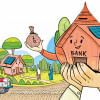Scaling climate and development finance for the Global South

From June 30 to July 3, 2025, world delegates convened in Seville, Spain, for the Fourth International Conference on Financing for Development (FfD4) of the United Nations. For many Global South countries, the deadline to meet the Sustainable Development Goals (SDGs) is fast approaching, but the financing gap remains staggering—an estimated $4 trillion every year. Seville was pitched as a moment to both inject momentum into resource flows and reshape the global financial system, making it more equitable and effective.
The meeting concluded with the Sevilla Commitment, outlining over 100 policy actions covering almost all aspects of the development finance agenda: from public and private resource mobilisation to debt relief, tax cooperation, trade, and the fight against illicit flows. Long-standing promises resurfaced, including the benchmark for wealthy countries to allocate 0.7 percent of their national income to official development assistance (ODA), with 0.15-0.20 percent earmarked for least developed countries. Donors were also urged to at least double support for domestic revenue reforms in partner countries striving to raise their tax-to-GDP ratio to 15 percent.
Developing countries, however, wanted fresh injections of public finance, concrete operational steps to expand the lending firepower of multilateral development banks (MDBs), and faster, fairer procedures for resolving debt crises. They also pressed for a more representative process to write global tax rules, as well as dependable new revenue streams through solidarity levies—a small, targeted tax on certain activities or goods, like airline tickets, collected to raise money for global causes such as development or climate action.
In some respects, the conference moved the needle. A coalition of nations, including France, Spain, Kenya, and Barbados, pledged to design taxes on premium airline travel and private jets, with proceeds ring-fenced for climate and development. Though the measure is still at a blueprint stage, and will require legislative follow-through, it marks a shift from theory to actionable policy.
Another tangible outcome was opening the way to use Special Drawing Rights (SDRs) of the International Monetary Fund (IMF) to strengthen the capital of MDBs. Under new rules, these SDRs can be used as "hybrid capital" to increase their financial impact three to fourfold. Spain recommitted to reallocating up to half of its 2021 SDR stock for this purpose. Other countries were encouraged to join by the end of 2025.
On tax cooperation, the final document promotes wider transparency and participation in information sharing and nods to calls for a UN-led process involving all states. However, the strongest demand for a binding UN tax convention was watered down, a reminder of the political fault lines between the North and the South.
There has been some partial progress on debt reform. The current debt system involving the Paris Club, new bilateral lenders, private bondholders, and state-owned lenders often ends in deadlock. The outcome urges more inclusive restructuring and stronger governance at the IMF and the World Bank, but does not specify binding mechanisms or automatic triggers for action.
However, FfD4 was not designed as a pledging conference. No master spreadsheet of new dollar amounts was unveiled. Instead, the outcome offers policy direction, reform blueprints, and the launch of initiatives that can grow if political will follows. For many observers, the absence of major new funding was nonetheless a disappointment, and the $4 trillion gap in SDG financing remains just as wide.
That gap reflects the deeper shortcomings of today's financial order. MDB lending is hampered by conservative risk rules and protracted approval processes. Debt restructuring is often reactive, coming too late to prevent economic damage. Tax regimes are largely shaped in forums where poorer countries lack full voice. While innovative financing options such as airline levies and fossil fuel windfall taxes are discussed, they face domestic political hurdles that slow implementation.
Developing countries made consistent and clear demands, urging MDB shareholders to unlock more lending, offer more local-currency financing, and set up rapid response facilities for crises. They want debt contracts that include standstill clauses and disaster-linked repayment pauses; rules that ensure all creditor groups share the burden fairly; tax rules set through a truly global process, backed by transparency measures that unmask illicit flows; and predictable global revenue streams earmarked for common challenges such as climate change and pandemic preparedness.
The Monterrey Consensus of 2002, the Doha Review of 2008, and the Addis Ababa Action Agenda of 2015 also called for increased development finance and a more inclusive system. They yielded incremental progress in areas such as domestic tax capacity and blended finance but missed their bigger marks. Hence, the ODA target remains unmet, debt distress has re-emerged, and climate finance still falls short of promises.
For Bangladesh, these global debates are anything but abstract. The National Adaptation Plan of Bangladesh estimates that around $230 billion will be needed for climate adaptation alone by 2050. With a tax-to-GDP ratio hovering near eight percent, fiscal space is tight, leaving little scope to fund large-scale green infrastructure or social programmes through domestic revenue. The ongoing IMF programme of $4.7 billion blends traditional support with climate-related financing. But the scale and availability of such resources depend heavily on how global reforms play out.
The practical value of the Sevilla Commitment for Bangladesh lies in what happens next—whether the SDR-based hybrid capital facility becomes fully operational, whether solidarity levies mature into steady funding streams, and whether MDB reforms expedite lending and lower borrowing costs. Bangladesh also stands to gain from stronger international tax cooperation and targeted technical assistance to enhance its domestic revenue base closer to the 15 percent threshold. However, the promises of the Commitment will remain on paper unless countries act on areas such as funding MDBs, enacting levies, meeting aid targets, and improving tax governance.
The challenge now is turning Sevilla's policy architecture into actual flows of affordable and timely finance that can close the gap between ambition and delivery. Without that, global targets such as the SDGs will keep slipping further away.
Dr Fahmida Khatun is executive director at the Centre for Policy Dialogue (CPD).
Views expressed in this article are the author's own.
Follow The Daily Star Opinion on Facebook for the latest opinions, commentaries and analyses by experts and professionals. To contribute your article or letter to The Daily Star Opinion, see our guidelines for submission.

 For all latest news, follow The Daily Star's Google News channel.
For all latest news, follow The Daily Star's Google News channel. 











Comments